The power of Nordic culture to transform Nordic history
The real or imagined cultural history of the Nordic countries (taken individually, in small groups or in their entirety) is a useful tool not to be disregarded lightly. The assets of Nordicity can be seen from varying perspectives, including the anthropological, ideological and the political. But the path of Nordic culture needs to be trodden with care: At its worst, it can provide succour for anti-democratic forces and uncertainty in a time when the security of the nation state is highly valued. At its best, it can provide a useful alternative to the national or European level, as a historically-rooted asset that adjusts to new interpretations and uses.
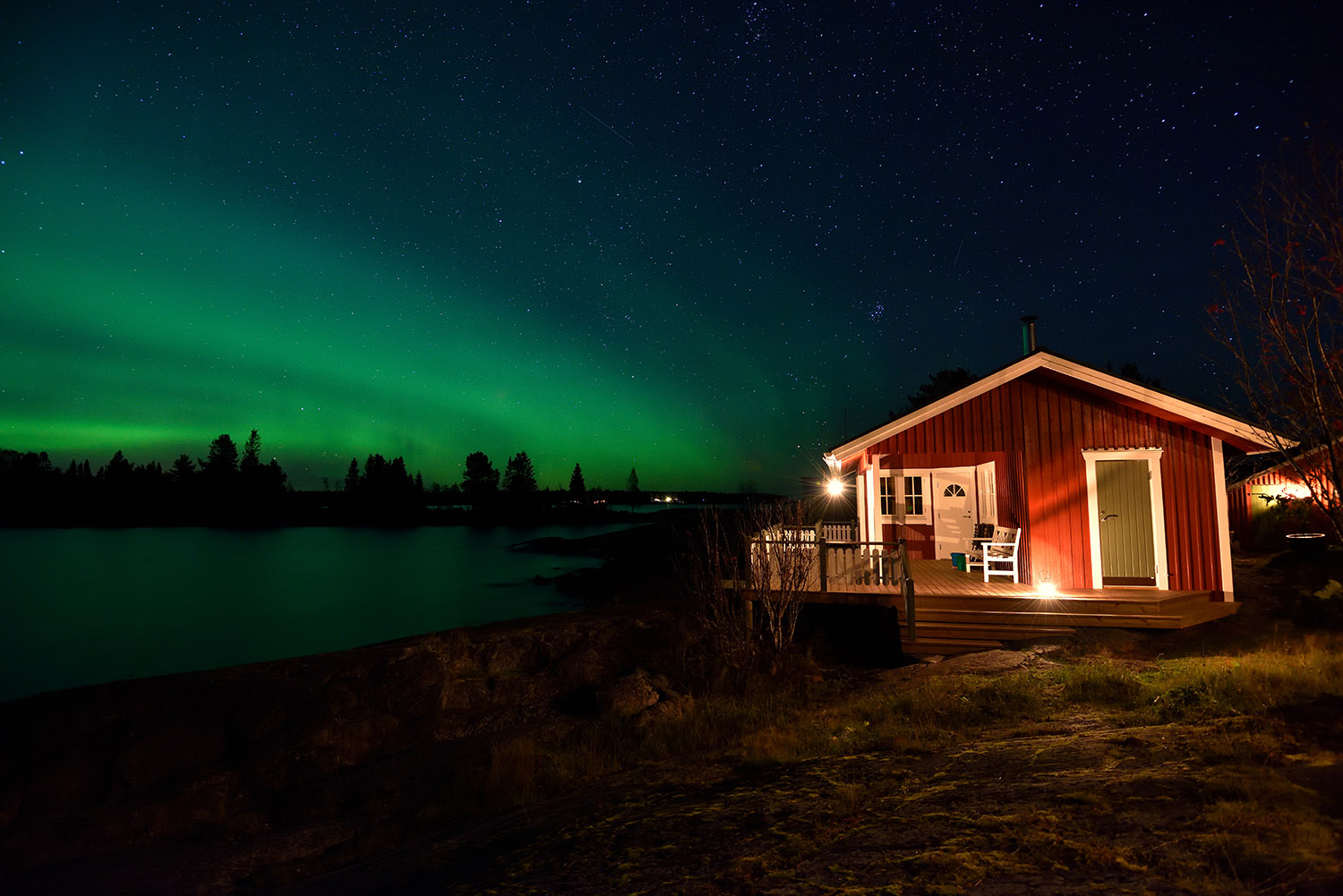
The Nordic region has long had a persistent presence in the European imagination. Some of the elements characterising the region are quite stable, including the cold and rustic environment and the brave, hard-working and egalitarian people. These elements have provided legitimising grounds for imperial ambitions in the 17th century, national romantic movements for Scandinavism in the 19th century, practical collaboration among Nordic welfare states as a model for export in the 20th century, and most recently the cradle for a revised cultural contract between liberal individualism and strong state intervention in the 21st century. The continual political viability of Nordic culture in new political settings is dependent on its foundation as a plastic construction originating outside politics; this could be a potential cultural constitution for Nordic political development, unfortunately not taken full advantage of to date.
Gunnar Wetterberg argues for a Nordic federation, mainly on political grounds, to give voice to values of justice, equality and democracy internationally (in his 2010 book Förbundsstaten Norden). In light of the EU’s troubles, promoting Scandinavian cooperation once again may prove to be important. It tends to be a recourse in-between the national and the global level when other options prove too complicated or disadvantageous (See Björkman et al. 2011 for more on this)
From medieval Nordic union to 19th century nationalism and Scandinavianism
We can follow the dynamics and ideas of cultural proximity and community-building through history. In later centuries these tendencies crystalized in nation-building, strivings for military domination and, latterly, modes of peaceful coexistence and economic integration.
Scandinavian history was similar to the rest of post-Roman Europe, but was shaped by a regional urge to mobilize otherwise fragmentized Nordic local kings, aristocrats and communities in the making, against the powerful urban Hanseatic network of German traders.
Scandinavian union was formed in 1397, the Kalmar Union headed by Queen Margareta, formally persisting until 1523. Historically this has been viewed as the Bad Old Days in Sweden, the Good Old Days in Denmark, and as not so important in Finland, Norway and Iceland since they continued to suffer under the dominance of Sweden and Denmark respectively, the two multi-cultural and conglomerate imperial states of Scandinavia (which were, of course, joined themselves at varying points in time).
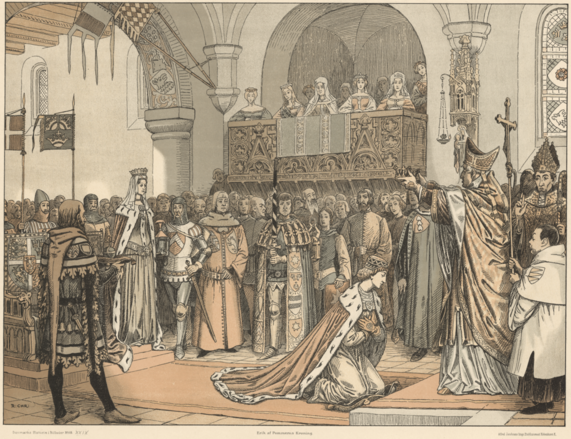 PICTURE: The idea of the Kalmar Union perhaps incorrectly gives the impression of a unified, peaceful Norden from the 12th century; it was in fact seen differently by each nation. Picture: Margaret I and her son Erik of Pommern at Erik's coronation. He was to be king of not only Denmark, but also Norden. Courtesy of AU Library, Campus Emdrup (DPB)
PICTURE: The idea of the Kalmar Union perhaps incorrectly gives the impression of a unified, peaceful Norden from the 12th century; it was in fact seen differently by each nation. Picture: Margaret I and her son Erik of Pommern at Erik's coronation. He was to be king of not only Denmark, but also Norden. Courtesy of AU Library, Campus Emdrup (DPB)
In the Early Modern Period Finland was an integral part of Sweden and several Baltic and German provinces were added to the varying constellations of the conglomerate state(s). Denmark, although having lost important territories in southern Scandinavia to Sweden in the 17th century, continues as a conglomerate state even today. In 1920 the German border was finally settled to the disadvantage of Denmark which had to accept losing a part of the nation comparable in size to that which Sweden gave up to Russia a hundred years earlier. Iceland, through successive moves, became autonomous in 1944. Greenland and the Faroe Islands are still autonomous and self-governing parts of the kingdom of Denmark. Norway, which became part of Denmark already in medieval times, was swapped into a personal union with Sweden in 1814 and declared independent in 1905.
In the 19th century, after 200 years of internal struggle for hegemony, it was the emerging European super-powers of Germany and Russia that gave an urgent political context for Scandinavian countries to start collaboration once again. The cultural context changed dramatically at the same time. From a framework of values drawn from Christianity on the one hand and the legacy of Antiquity on the other, the atmosphere of Enlightenment, belief in the reason and welfare of the individual grew and with it the search for meaning in history and the nation.
...dansk, norsk, svensk...
But, where was the nation? The loss of territories in Denmark and Sweden called for Scandinavian mobilization already in the 1810s. Associations to save Nordic heritage were founded and interest in pre-history became ever more important to demonstrate the long roots of an autonomous culture. Language studies became central as the languages were interpreted as remnants of independent, but related cultures – Indo-Germanic, Baltic-Ugric – and were conceptualized and seen as proof of cultural relations, hence indicating a foundation upon which communities could be built. The affinity of Scandinavian language, history and culture became institutionalized as knowledge, heritage and culture, which in turn resulted in repercussions for ideology, politics, architecture and aesthetics that still exist today.
Nordicity as a rooted asset adjusting to new uses
In the Early Modern Period, chauvinist versions of histories merged classical Greek stories with Icelandic material into long-standing ideas of Nordic values, which ultimately became the legitimizing foundation for claims to supremacy in Scandinavia and for a major role in the European arena. From the 19th century onwards the idea of a shared culture instead of a battlefield became part of each nation’s self-understanding, and the reservoir of political collaboration and international marketing has latterly been labelled the Nordic model and respectively appropriated as the Norwegian, Danish, Swedish etc.

PICTURE: Is the culture of Nordic collectivism a fallacy? Has it been replaced by an individualism where Nordic citizens only make a pact with the state in order to support their own demands? Photo: Andrew Gook, unsplash.
Interestingly, the egalitarian and collective forms of social organization associated with the Nordic model has, in the beginning of the 21st Century, been challenged by a new interpretation, namely, as a contract between an extremely individualistic Nordic citizen in need of a pact with the state in order to support his or her individualism. With new waves of migration, the identity politics of the ‘Nordic’ has also been called for once again by illiberal projects in all the Nordic countries.
The Nordic as a useful property provided by history
If we use more theoretical terminology from human geography, regionality in the Nordics can be decerned in various useful properties, as follows:
- The material for narratives of a Scandinavian community are as manifold as any other building of a region: there are aspects of similarity in language and attitudes that might account for a homogenous region, both with historic conditions and findings from contemporary World Value Surveys to support this view.
- That the Nordics is a functional region can be argued in many ways with respect to exchange in trade, labor, culture etc. It is also easy to argue that exchange in all kinds of markets for many actors in this globalized era is still centered around a Nordic core. The workforce might not travel to Sweden as it did in the 1960s, but rather from Sweden to Denmark and Norway, but Nordic exchange still prevails and makes Scandinavia a viable functional region.
- Administratively Scandinavia is part of an infrastructure with both government bodies, NGOs and commercial organizations to give a clear image of this region as a reality. The Nordic Council with its flag is only one of them – reaching beyond the Scandinavian penninsula to Iceland and the three autonomous regions of the Faroe Island, Greenland and Åland.
- Next we can ask how the objective identity of the region might add a subjective layer of regional identity to actors identifying with Scandinavia or Norden. This distinction also means that facts turn into values and add both an emotional and political dimension to any discussion about Nordic culture. Depending on the ethical, political and national standpoint, this means that values can be evaluated - whether as good or bad. Furthermore, one can be used to hide or motivate the other depending on the situation. Are we selling peace, oil or weapons with a Nordic argument?
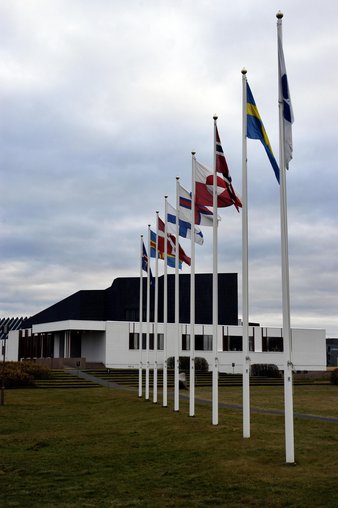
PICTURE: Nordens House in Reykjavík. The Nordic Council's center in Iceland was designed by the famous Finnish architect Alvar Aalto and opened in 1968. Photo: Johannes Jansson/norden.org.
Nordic assets and their downside
These historically delivered utilities relate to one another in interesting and telling ways, which can be useful when looking at the ‘good’ and ‘bad’ sides of Nordicity. These can be summarised as follows:
1. Scandinavia as an anthropological asset (a homogenous and functional region):
The relative poverty and late modernization of the Scandinavian societies can be associated with equality being highly valued, flat organization, a high degree of interpersonal trust resulting in low transaction costs in both politics and economics, stable institutions, and a high degree of predictability. Far-reaching secularization, rapid modernization and welfare provision have released the individual from family and neighborhood constraints to feel free to choose the path of life individually to a higher degree than in most societies in the world.
The flip side of these individual ‘virtues’ includes low utopian levels and tension to do with existing cultural homogeneity in, for example, traditional local communities with a strong feeling of collective consensus. In communities more open to late-modernity, a restructuring of individual identity has released a great deal of uncertainty and the other side of freedom is filled with psychic diagnoses in need of cure.
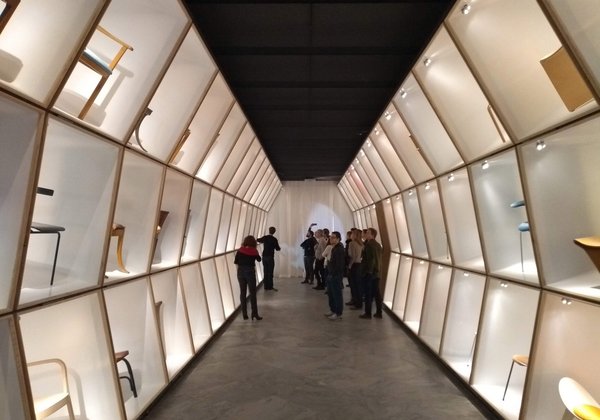
PICTURE: Tourism and cultural industries draw on everything from Nordic design, literature - and even light. Photo: The Danish Chair exhibition at the Danish Design Museum in Copenhagen, Nicola Witcombe.
2. Scandinavia as ideology and brand – explicit tales and symbols (identity of the region):
Vikings and the Welfare State are perhaps the most well known symbols. A few decades ago in the light of the Swedish/Danish sexual liberation, Sin, would have been another. The rural character has also found aesthetical expression in art as landscapes in late 19th century, melancholic films by Ingmar Bergman, a clean and white functional design by Alvar Alto and films by Lars von Trier. The brand of Nordic light has been used to introduce Nordic art internationally for the last hundred years.
Literature and music provide signs of various kinds. In their novels August Strindberg, Astrid Lindgren and Vilhelm Moberg create images of Sweden as HC Andersen, Sandemose, Ibsen and Runeberg and Väinö Linna do for other Scandinavian nations. There is no Scandinavian literature within Scandinavia, but read side by side they provide a Nordic atmosphere. A new, post-welfare atmosphere is provided by the crime novels of Stieg Larsson and Henning Mankell. Tourism and cultural industries draw on all these images and use them as material for creating experiences and revenue.
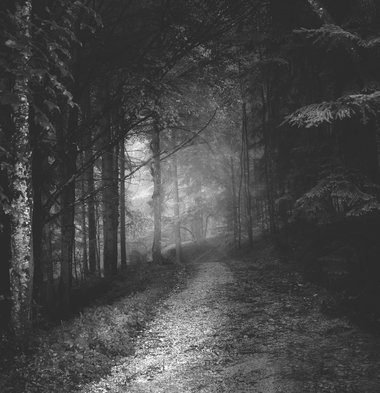
PICTURE: A Nordic atmosphere can include both the dark and gloomy murder scenes of Nordic noir, or the special light ranging from the far north and the Northern Lights or Denmark's Skagen which have both been popular with artists since 1800s. Photo: Simon Berger, unsplash.
Most of the images are positive, provide examples to be inspired by, attract visitors and new talent. On the flip side, these positive tales of peace and democracy can hide hierarchical practice, cowardly actions, corruption and armament deals. Sweden and Norway are some of the great exporters of lethal weapons which does not really fit into the image of the lovely landscape of Norwegian fjords or the villages of Emil of Lönneberga and Pippi Longstocking.
3. Scandinavia as a political option (mobilizing for action):
The narrative of Scandinavia as a shared culture was to make the threshold for violence steep, and the will to negotiate and support neighbors closer at hand. This helped turn Scandinavia into a positive example for what was then Czechoslovakia during its dissolution; the lesson can of course not be taught in any easy way, but the cost of regional breakdown became horribly clear in the Balkans when Yugoslavia broke up in the 1990’s. Engagement in Third World peace-keeping missions and negotiations are often assigned to Scandinavian leaders.
The first two utility levels above feed into and are supported to a degree by Scandinavian organizations. The recognition of a shared culture makes negotiation easier than otherwise would have been the case and several important political achievements show the viability of Scandinavia even if it has yet to reach the level of a state. Or rather, because it is a cultural dimension, it has the advantage of being more fluid and mainly positively charged. When the power of nations are more restricted by global networking, communication and migration, this level might be useful in new ways - already signalled by the regionalization of Europe and the creation of cross-national regions and exchange in Scandinavia.
Is there a down side to all of this? Besides anti-democratic abuses motivated by Nordism, there is a more subtle loss or risk at play when regionalization gains momentum. It seems regionalization is part of a trend where the logic of flexible capitalism may mean a fluidity characterized by loss of security, traditional community protection and losing hold on your own identity construction. A more fluid identification gives the opportunity for self-expression new leeway, and individuals can relate to Scandinavian heritage in new ways, while national communities are withdrawing from their more political responsibilities. The loss of security has in 2020, however, resulted in a backlash and a return to the supposedly stable value of the nation. The role of Norden in Norden is an ongoing history, dependent on how perceptions of fear and hope are articulated both in historical discourse, culture and politics.
This article is an abridged and slightly updated version of the author's article 'Nordic culture: An asset with many facets.' in the book The value of arts and culture for regional development : a Scandinavian perspective, edited by Lisbeth Lindeborg & Lars Lindkvist (Routledge, London, 2013, pp. 15–28).
Further reading:
- G. Wetterberg, Förbundsstaten Norden [The Federal State of the Nordic Countries]. (Stockholm; Föreningen Norden, 2010).
- Jenny Björkman, Björn Fjæstad and Jonas Harvard, ed., Ett nordiskt rum. Historiska och framtida gemenskaper från Baltikum till Barents hav [A Nordic room. Historical and future communities from the Baltics to the Barents Sea] (Göteborg; Makadam Förlag, 2011).
- Klas Eklund, Lars Trägårdh, and Henrik Berggren, Shared norms for the new reality: the Nordic way/ World Economic Forum, Davos 2011, (Stockholm: Global utmaning, 2011).
- P. Aronsson and L. Gradén, eds., Performing Nordic heritage. Everyday practices and institutional culture (Burlington; Ashgate, 2013).
- Peter Aronsson, 'Nordic culture: An asset with many facets', in Lisbeth Lindeborg & Lars Lindkvist, eds., The value of arts and culture for regional development : a Scandinavian perspective, (Routledge; London, 2013), pp. 15–28.